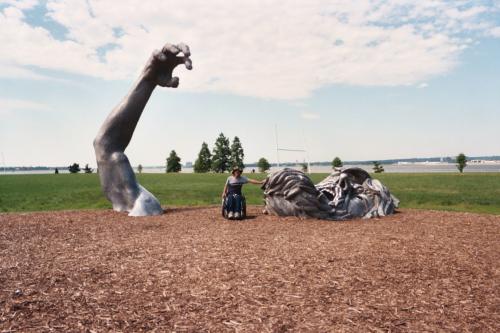Rutgers Proposal for Colleges Meets Alumnae Resistance
By GEORGE JAMES
A Rutgers University task force is recommending creation of a college of arts and sciences that would standardize admissions criteria, graduation requirements and other procedures. Under the proposal, some Rutgers colleges would function as campuses, but no longer by name as colleges.
The suggestion, which is part of a 175-page report that is scheduled for release on Monday, was criticized yesterday by the Associate Alumnae of Douglass College, which introduced a Web site earlier in the day, savedouglasscollege.org, calling for the measure’s defeat. The group said the proposal would mean the end of Douglass College.
The university president, Richard L. McCormick, said in a telephone interview last night that the report would undergo months of discussion. He noted that the plan was not calling for a merger; the colleges would retain their distinct qualities.
“It recommends creating something that every other research university has, a college of arts and sciences,” Dr. McCormick said. “And it recommends calling our residential campuses what they are: residential campuses.”
He created the 75-member Task Force on Undergraduate Education in April 2004 to guarantee that in emphasizing research, Rutgers does not shortchange undergraduates on courses and access to faculty members. In addition, Dr. McCormick said, he wanted to bring unity to what he called “a patchwork quilt” of schools and programs situated in New Brunswick and Piscataway.
Besides Douglass, which is an all-women’s college, Rutgers College, Livingston College and University College would all be affected.
“What it does, it effectively ends Douglass College,” said Sheila Kelly Hampton, class of ’70, who is president of the Douglass alumnae group. “By calling it a campus, they just are talking about where someone happens to live. They don’t address many of the student life issues and program issues.”
Dr. McCormick disagreed. “Douglass will be as it is now, a women’s-only campus, and will continue to have its signature courses on women, retain its distinctive mission and continue to reflect its unique history,” he said.
Each individual college now sets its own criteria in certain areas, including admissions, honors programs and graduation requirements, and none have faculties of their own; they are served by a general faculty of arts and sciences, he said. A new college of arts and sciences, under a unified structure, would simplify standards for students, faculty and administrators, and get faculty members more involved with students, he added.
But the executive director of the alumnae, Rachel Ingber, class of ’83, said: “Eliminating colleges does not bring faculty closer to students. It creates one huge university where undergraduates don’t have small colleges where they can get academic advice on curriculum programs and the unique mission that Douglass College provides for women.”
This may be removed from our usual topics, but since I am a Rutgers graduate, and I know a number of other Rutgers alumni read this blog, I just wanted to point out this important development concerning the school.
The current president of Rutgers University previously managed to scuttle a recent plan proposed by our former governor James McGreevey to merge Rutgers university with the states other medical and research oriented universities. This plan would have done little to improve the quality of medical education or research, while confusing the organization of the university as a whole. The previous plan was entirely based around the medical and research divisions of the universities involved, which included Rutgers, UMDNJ, NJIT and possibly others, while providing no reasonable plan for the administration of liberal arts and undergraduate departments. This current report seems to be a response to that, confirming that undergraduate education must be a priority at public universities.
I haven’t yet read the actual report (although I intend to), but after spending four years at Rutgers, New Brunswick I’m rather familiar with the organizational structure of the university. As it currently stands, Rutgers New Brunswick is actually a network of several nearby campuses in the neighboring towns of New Brunswick and Piscataway, linked through a system of free buses. As a large university, Rutgers consists of several different colleges, and each college is associated with a different campus. Each college has a unique history and origin, and today there are five liberal arts colleges, which share a common faculty of arts and sciences, and a number of specialty schools, each of which has their own faculty for their specialized programs. Students in specialty schools (such as Engineering, Pharmacy, Mason Gross School of the Arts etc.) also take at least a basic number of liberal arts classes as well, which are the same classes that members of the five liberal arts colleges take.
Here is a brief summary of the history, characteristics, and my thoughts on the future of the four liberal arts colleges, in chronological order of their founding:
Continue reading Rutgers Proposal for Colleges Meets Alumnae Resistance


 The Zimmerli Art Museum, located on the campus of my alma mater, Rutgers University, has a well put together
The Zimmerli Art Museum, located on the campus of my alma mater, Rutgers University, has a well put together 


